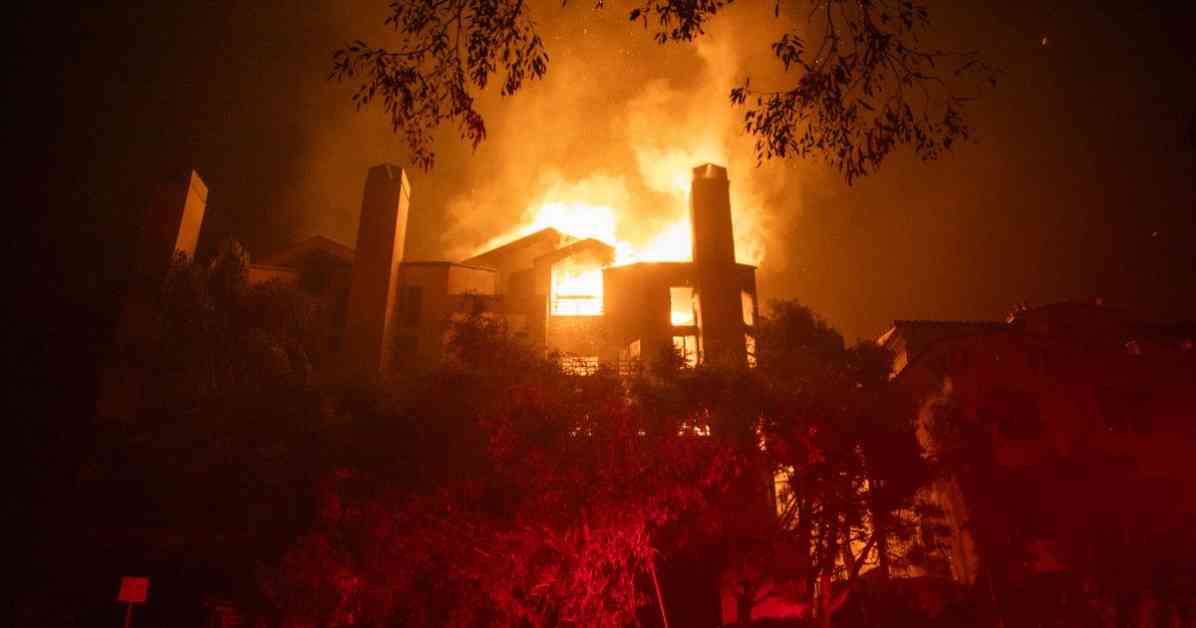Uncovering the ‘Perfect Storm’ Behind the LA Wildfires
Major wildfires have ravaged Los Angeles, claiming the lives of at least 10 people and forcing thousands to evacuate their homes. Over 10,000 buildings have been consumed by the flames, leaving behind a trail of destruction and despair. The Kenneth Fire, the first of the two largest blazes, erupted in the San Fernando Valley on a fateful Thursday afternoon before spreading into Ventura County. Subsequently, the Eaton Fire ignited near Pasadena on a Tuesday night, obliterating over 5,000 residences, establishments, and vehicles. Witnessing the aftermath, Barbara Bruderlin, the head of the Malibu Pacific Palisades Chamber of Commerce, expressed the devastation and loss that now defines the impacted areas. “There are places where not a single trace remains, just barren land,” lamented Ms. Bruderlin.
**Santa Ana Winds: The Fire’s Fanning Fury**
Experts attribute the rapid escalation of the fires to the infamous Santa Ana winds, notorious for their strength and aridity in coastal Southern California. Met Office Expert Meteorologist, Brent Walker, shed light on the environmental conditions fueling the flames. Walker noted, “These winds have undoubtedly played a role in exacerbating the LA wildfires. With wind speeds reaching up to 60-70 mph and humidity levels plummeting to 15-20%, the Santa Ana winds create a perfect storm for such catastrophic events.”
Moreover, fire scientists emphasized the role of high winds in carrying ‘firebands,’ igniting fresh blazes as they travel. Prof Rory Hadden, a distinguished figure in Fire Science from the University of Edinburgh, elaborated on the phenomenon, stating, “The swift propagation of fires through neighborhoods is primarily driven by these wind-borne embers, which are particularly prevalent when structures catch fire.”
**Dry Conditions: Fueling the Inferno**
The relentless inferno in Los Angeles was further stoked by prolonged drought conditions, with the region witnessing an alarmingly meager rainfall in recent months. Following a promising start to 2024 with substantial rainfall in February, subsequent months painted a grim picture. The Weather Network reported a mere 0.8 mm of rain since July 1, 2024. Dr. Douglas Kelley, a Land Surface Modeller at the UK Centre for Ecology & Hydrology, highlighted the lethal combination of dry vegetation, strong winds, and scant precipitation as the catalyst for the devastating wildfires.
**Climate Change: A Ticking Time Bomb**
As the flames continue to engulf California, experts warn of the ominous impact of climate change on the region’s fire season. Prof Apostolos Voulgarakis, a seasoned expert in Global Climate and Environmental Change from Imperial College London, drew attention to the escalating severity of wildfires linked to changing climatic patterns. “The unprecedented wildfires in California are a stark reminder of the looming threat posed by climate change. The exacerbation of Santa Ana winds and the resultant fire outbreaks are harbingers of a graver future,” cautioned Prof. Voulgarakis.
Research projections indicate a troubling trajectory, with an anticipated surge in extreme fires globally. By 2030, a 14% increase in severe fires is expected, escalating to 30% by 2050 and a staggering 50% by the century’s end. Despite these grim forecasts, Prof Stefan Doerr, the Editor-in-Chief of the International Journal of Wildland Fire, underscores the need for a comprehensive evaluation to ascertain the direct impact of climate change on the current wildfire crisis.
As we grapple with the aftermath of the LA wildfires, the underlying factors driving this catastrophe serve as a poignant reminder of the urgent need for proactive environmental stewardship. The resilience of communities, the heroism of firefighters, and the unwavering spirit in the face of adversity stand as beacons of hope amidst the charred landscape. Let us heed the warning signs etched in the flames and unite in safeguarding our planet for future generations.

